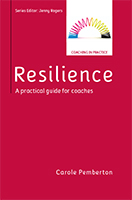As a 9 year old I walked to school past a house where a large boxer dog stood outside on guard. It barked loudly as I walked towards it, and when I crossed the road to escape it would follow me. I came to be petrified of the dog, and eventually planned routes were I was guaranteed not to see him. Was the dog dangerous? – Unlikely, but that experience conditioned into my brain the idea that dogs are to be avoided. A belief that stays with me as an adult. But what if, when the dog barked the owner had come out of the house had held it by the collar and had invited me to come and say hello to him. If they had told me how to stroke the dog and had explained that his bark was worse than his bite. It is possible that over time I would have seen encountering the dog as one of the pleasures of walking to school. More centrally, it would have stopped the development of a conditioned response in my brain. I would have had an unpleasant memory overlain with a new one that kept my brain open to the idea of dogs being fun. I would have developed a flexibility in my responses.
It is that recognition that our brain quickly becomes conditioned if we allow an unpleasant memory to be reinforced is behind the adage of the importance of getting back on the horse after a fall.
Neuroscience has now shown that recent memories are fragile. They are not embedded in our brains so they can be overridden by new ones. The child who falls off the horse and remounts will put the fall in the context of a whole experience of the feelings and sensations of being out on a horse. They will contextualize the fall as part of the event, but not the whole event. Meanwhile the child who falls and does not remount will remember only the pain and may decide that horses are dangerous.
So, when we face fear and pain our brains are better served by us being willing to face the experiences, because by doing so we learn how to remain flexible in our responses, and in avoidance we condition our brain into thinking we cannot cope with difficulty.


